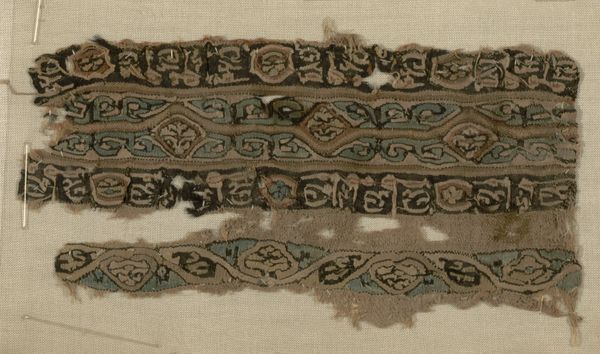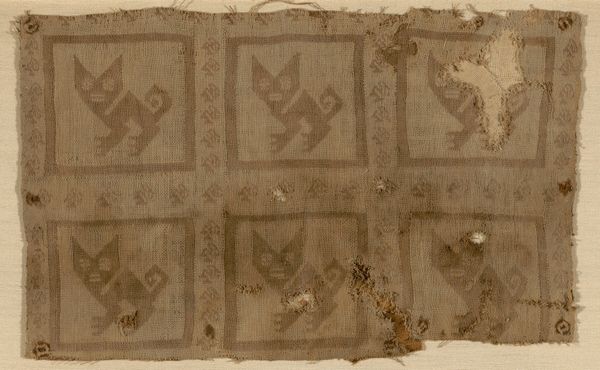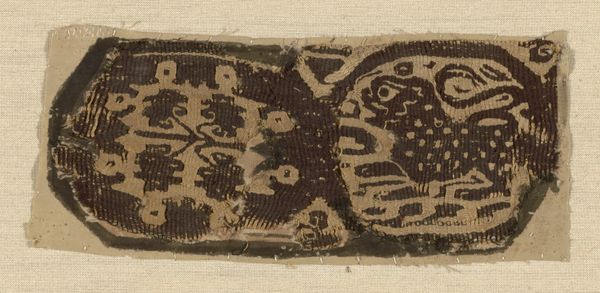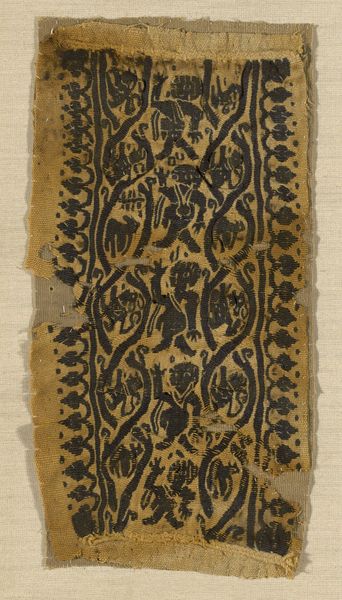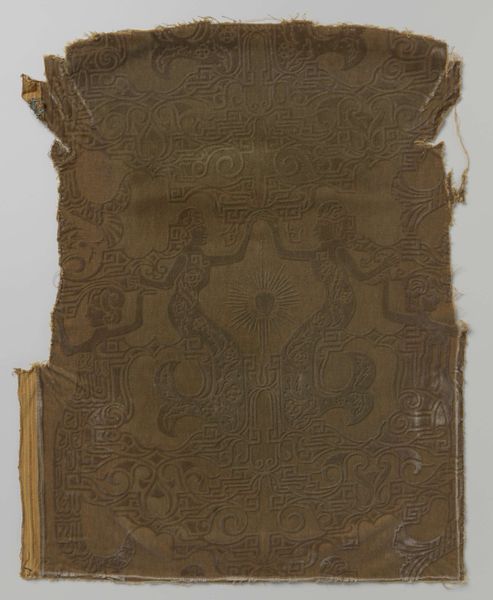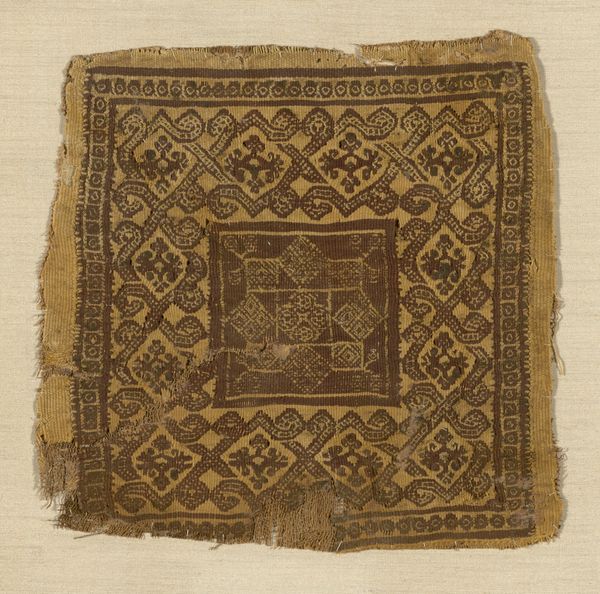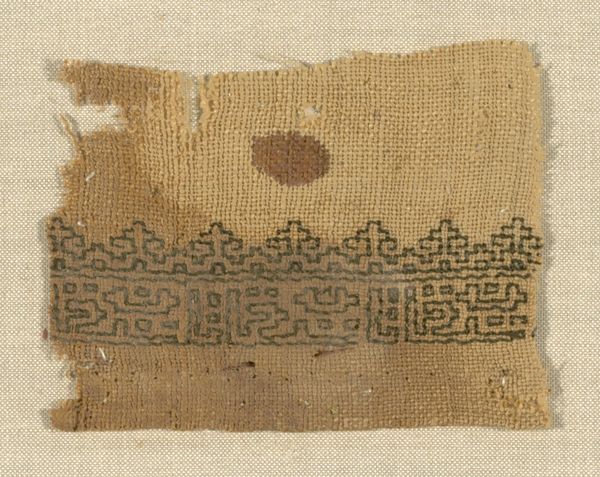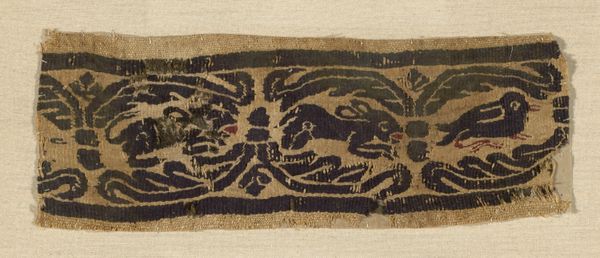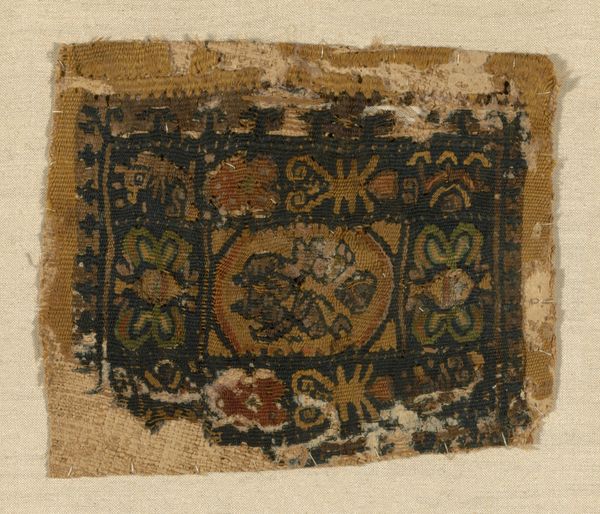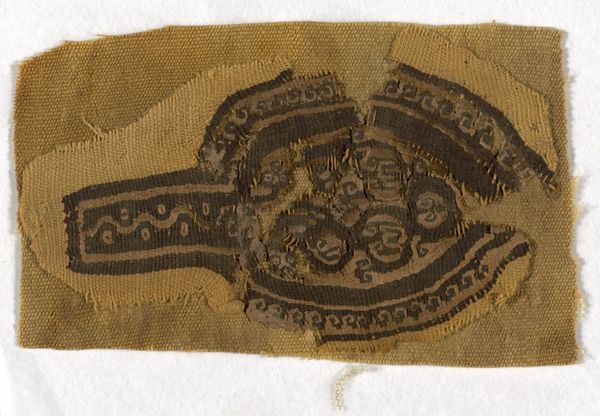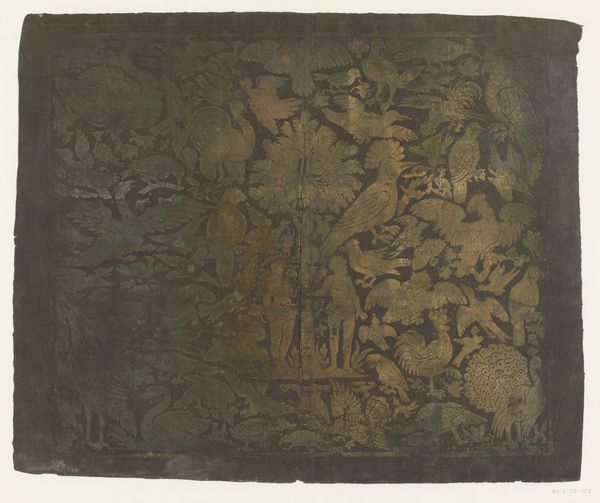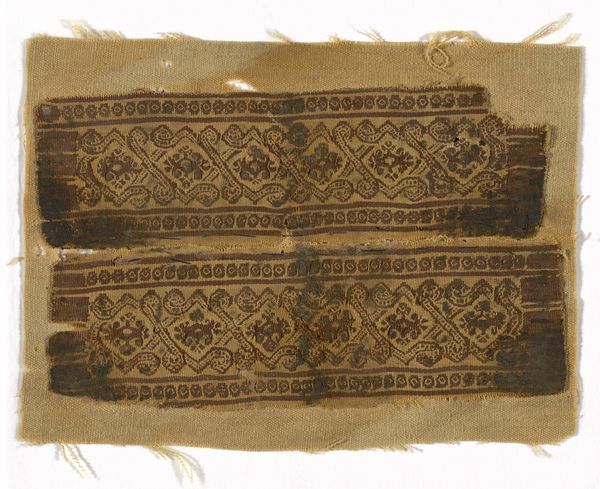
weaving, textile
#
weaving
#
textile
#
ancient-mediterranean
Dimensions: 11.5 × 16 cm (4 1/2 × 6 1/4 in.)
Copyright: Public Domain
Editor: This is a woven panel, dating back to the 5th or 6th century, during the Roman period. It's a textile fragment, currently held at the Art Institute of Chicago, from the Coptic era. Despite its fragmented state, it has an amazing symmetrical pattern, but how can we start to understand the meaning and use of something like this? Curator: We should consider the function of textiles in late antique society. Cloth wasn't just practical; it was a potent signifier. Think about what textiles communicate: status, beliefs, trade networks. Who do you think would have commissioned or owned a textile like this? Editor: Given the age and what seems to be its elaborate pattern, I would guess someone relatively wealthy, within the Roman or perhaps the early Byzantine elite? Maybe someone within the Church? Curator: Exactly! Coptic textiles, especially those found in burials, often blend Christian and pagan symbols. We can see here possible references to earlier classical traditions adapted to new belief systems. Considering the quality, this likely adorned the elite, signifying their social standing, piety, and integration into the complex cultural landscape of the time. Does thinking about that history shift how you see the object now? Editor: Definitely. It's no longer just a damaged piece of fabric; it speaks of power, faith, and cultural fusion. It makes you think of who wore it and what purpose it served in their life. Curator: Precisely. And it's a good reminder that even fragmented objects like this can provide insights into the past, informing us about society, religion, and power structures.
Comments
No comments
Be the first to comment and join the conversation on the ultimate creative platform.

